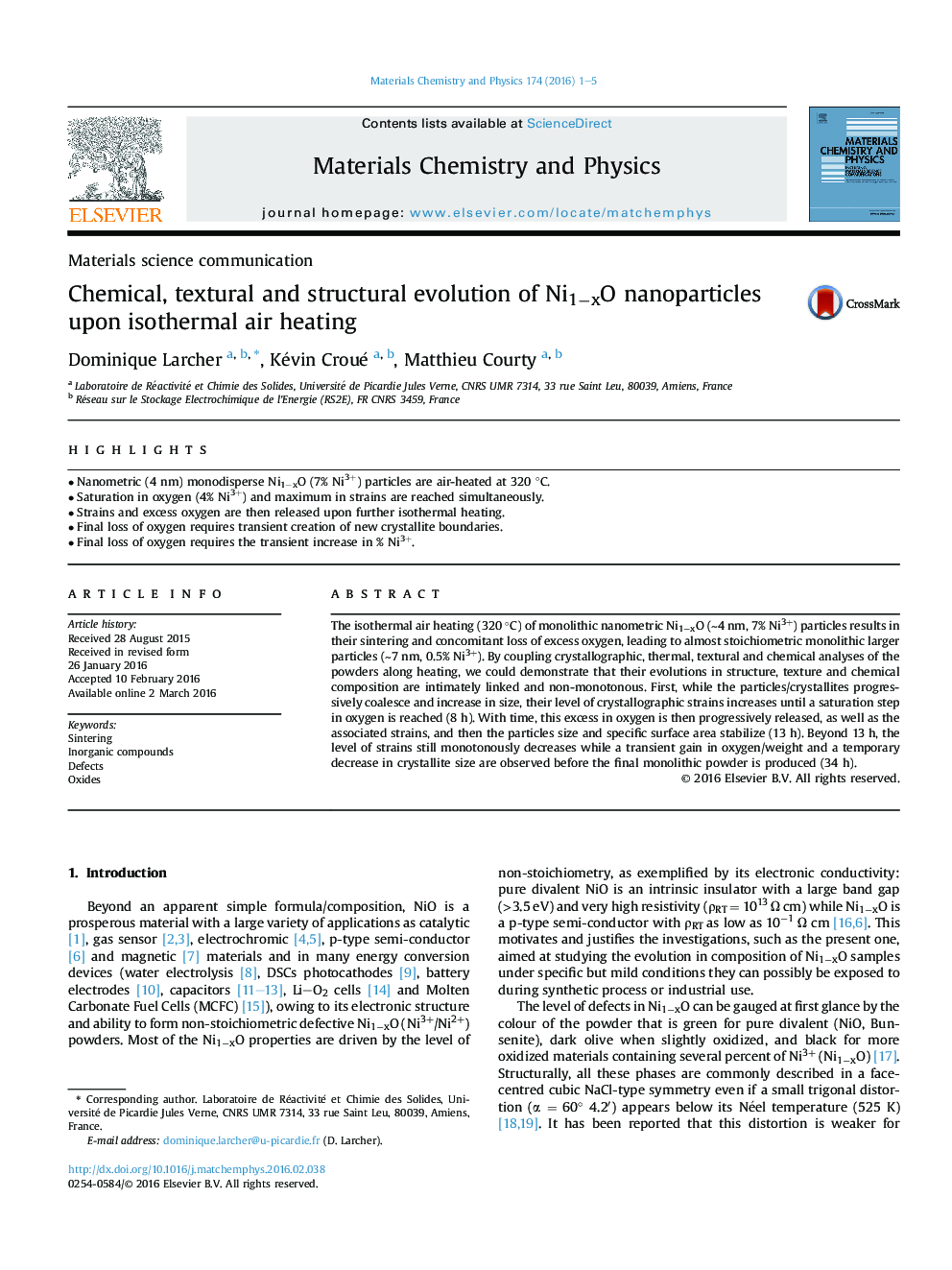| Article ID | Journal | Published Year | Pages | File Type |
|---|---|---|---|---|
| 1520769 | Materials Chemistry and Physics | 2016 | 5 Pages |
•Nanometric (4 nm) monodisperse Ni1−xO (7% Ni3+) particles are air-heated at 320 °C.•Saturation in oxygen (4% Ni3+) and maximum in strains are reached simultaneously.•Strains and excess oxygen are then released upon further isothermal heating.•Final loss of oxygen requires transient creation of new crystallite boundaries.•Final loss of oxygen requires the transient increase in % Ni3+.
The isothermal air heating (320 °C) of monolithic nanometric Ni1−xO (∼4 nm, 7% Ni3+) particles results in their sintering and concomitant loss of excess oxygen, leading to almost stoichiometric monolithic larger particles (∼7 nm, 0.5% Ni3+). By coupling crystallographic, thermal, textural and chemical analyses of the powders along heating, we could demonstrate that their evolutions in structure, texture and chemical composition are intimately linked and non-monotonous. First, while the particles/crystallites progressively coalesce and increase in size, their level of crystallographic strains increases until a saturation step in oxygen is reached (8 h). With time, this excess in oxygen is then progressively released, as well as the associated strains, and then the particles size and specific surface area stabilize (13 h). Beyond 13 h, the level of strains still monotonously decreases while a transient gain in oxygen/weight and a temporary decrease in crystallite size are observed before the final monolithic powder is produced (34 h).
